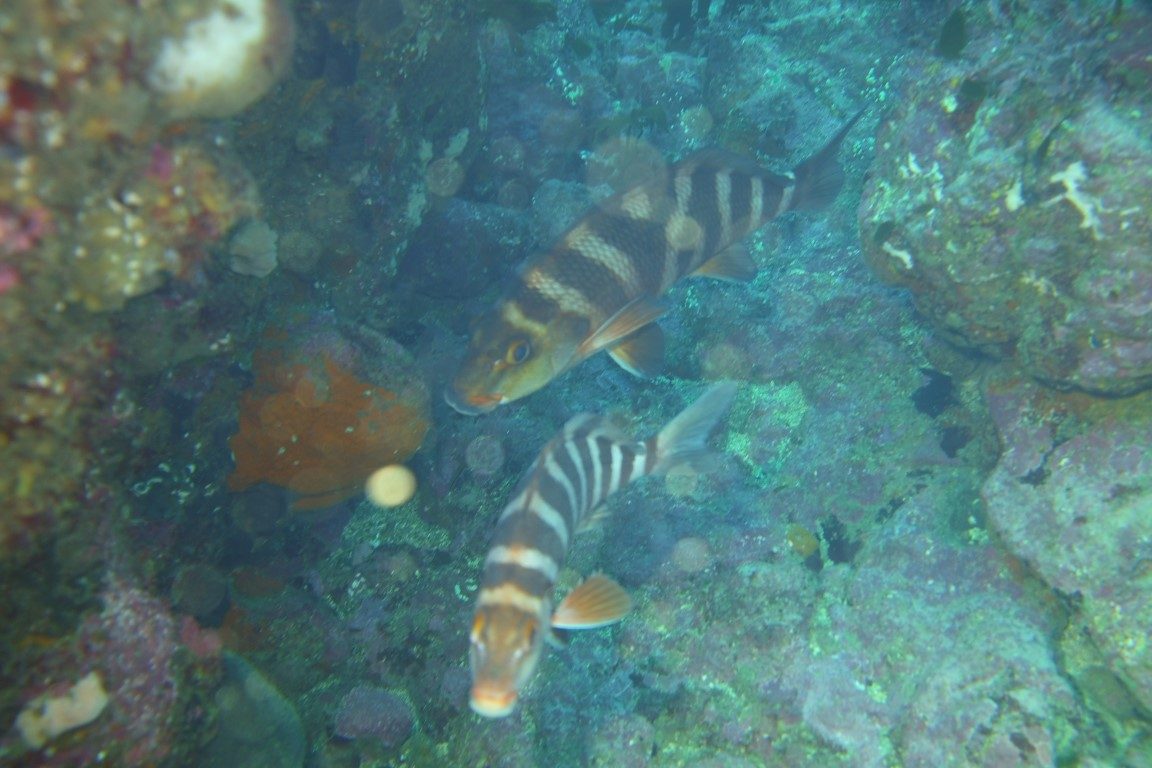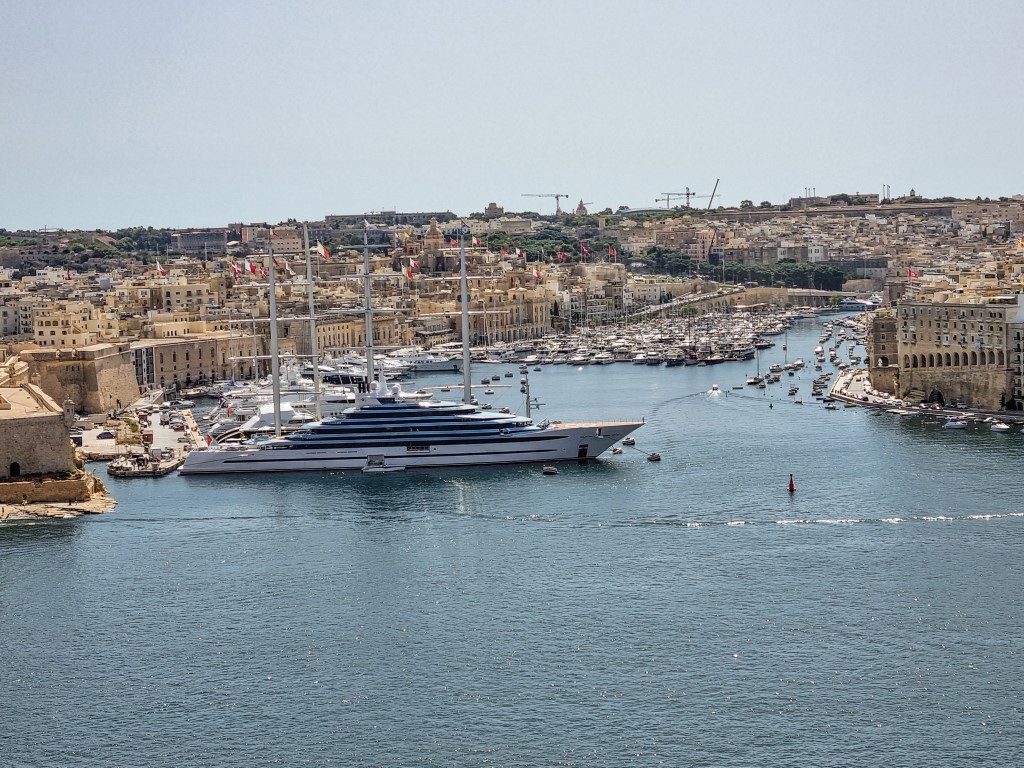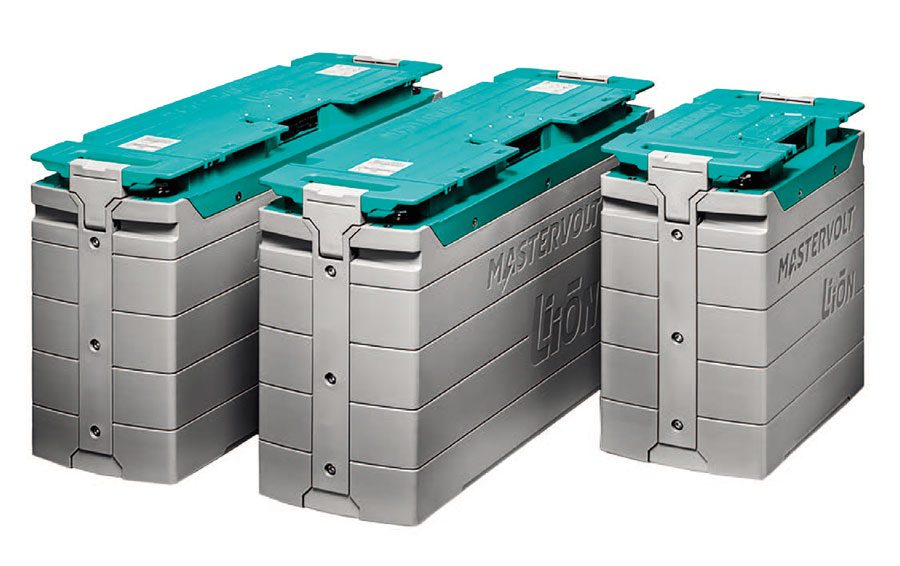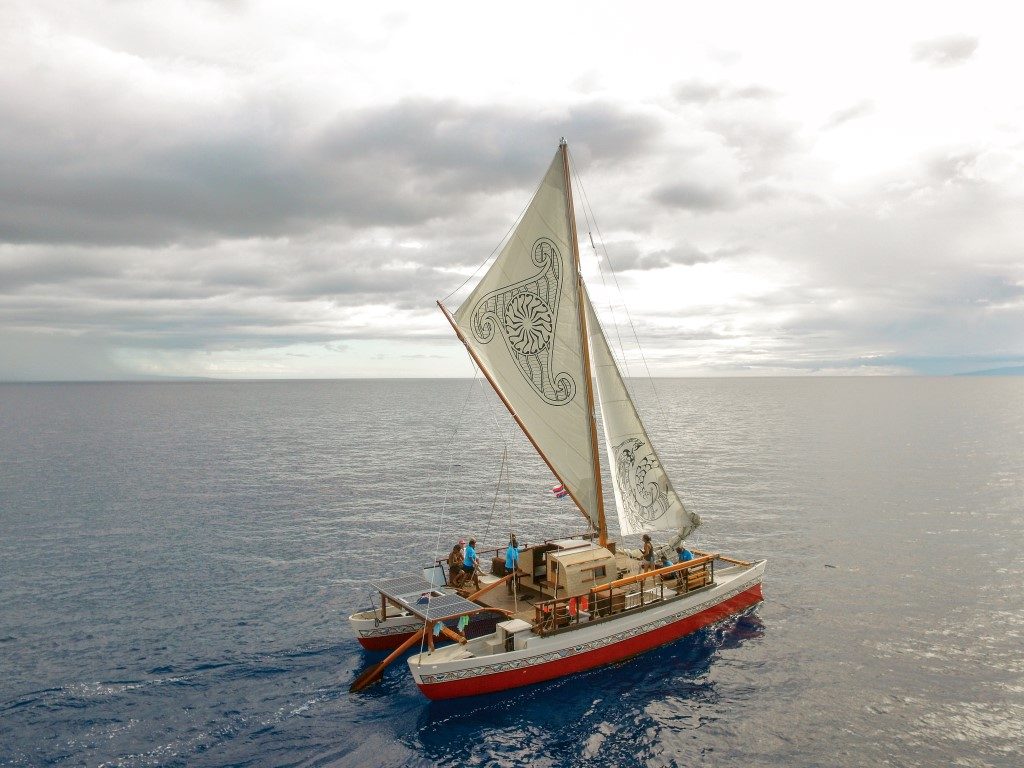

Easier transportation of people, medical supplies and cargo around the islands of Micronesia took a leap forward with the launch of another Lloyd Stevenson-built vaka motu in Auckland last month. Words and photos by Lawrence Schaffler.
A 50-foot, twin-hulled, open-ocean sailing canoe, a vaka motu is a versatile, eco-friendly work boat built to carry people and cargo within lagoons and over small distances between Pacific islands.
It’s based on a traditional Polynesian design and this one is the third from Auckland’s Lloyd Stevenson Boatbuilders. Two more are in production. And because they use an unusual blend of construction technologies, they pose a welcome challenge to Lloyd’s team.

Laying up the hulls in the moulds is the easy part (epoxy, e-glass with foam core), but these are held together with heavy, wooden cross-beams tied by traditional lashing. Well, the method is traditional – the lashings – as well as the standing rigging, is a modern material (Vectran).
There are plenty of other traditional components – check out the massive steering oar (called a ‘hoi’) with its intricately-carved graphic. Built from solid timber, it weighs a bomb. But because it pivots delicately on a single knuckle (made from kwila), and because the ‘blade’ is buoyant, steering the vaka, I’m told, is actually very easy.
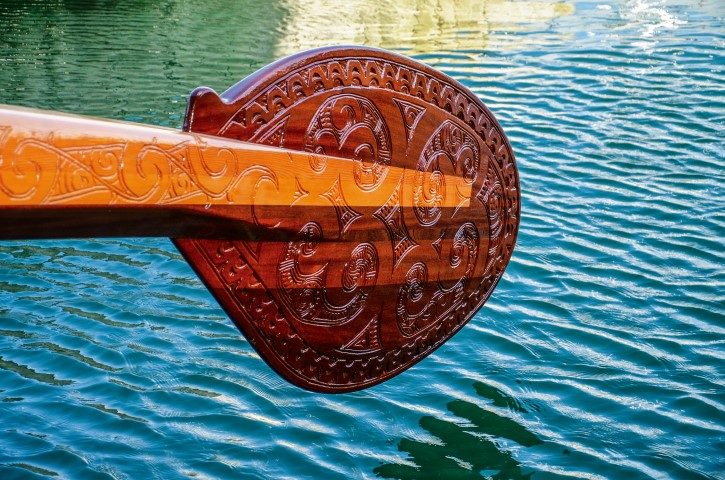
This one is named Waa’Qab – and if you don’t want to dislocate your jaw trying to pronounce it – you can use Yap instead. Yap – the English (western) version of Waa’Qab – is an island in the Caroline group and part of the Federated States of Micronesia. It’s where this vaka is headed – some 3,000 miles north of New Zealand.
Waa’Qab is part of a growing fleet of vakas operating under the auspices of the Okeanos Foundation – an international community of ocean navigators, scientists, cultural leaders, spiritual advisers, activists and artists. They share a vision for a sustainable, fossil fuel-free future built upon respect for traditional knowledge, environmental stewardship and biodiversity.

Okeanos develops and funds projects that inspire and initiate positive change for people and the environment – while increasing awareness of the threats our oceans face.
Other vakas are already operating in the Marshall Islands, Vanuatu and Saipan, an island in the Mariana archipelago. Described as the ‘work boat of the Pacific’, a vaka weighs nine tons and can accommodate 12 people and three tons of cargo.

PROPULSION
Waa’Qab is a little different from her sisters in that she’s fitted with a hybrid propulsion system: twin, three-cylinder, 20hp Perkins engines that run on traditional diesel or coconut oil – as well as electric drives. The bio-fuel is processed at a newly-built facility in Chuuk – another island in the region. It enables the islands to use the abundance of coconuts and limit their dependence on fossil fuels.
The boat’s parallel hybrid drive system was designed and supplied by David Czap – owner of Dutch company Naval DC. Waa’Qab, he says, is fitted with lithium-polymer batteries.
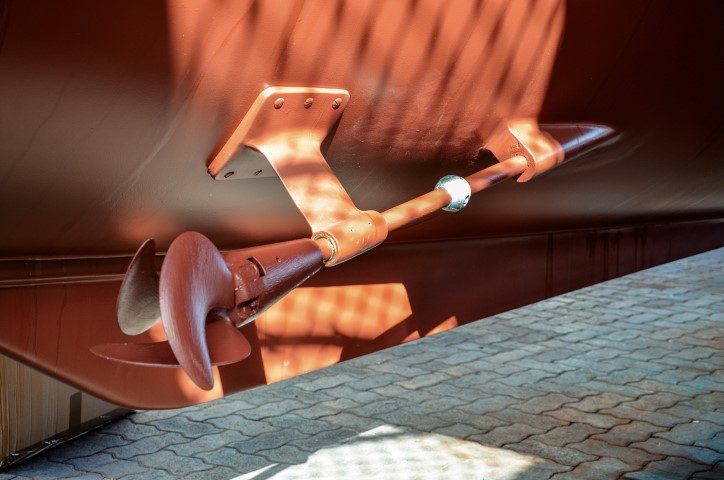
“These weigh 260kg (130kg per side) – conventional lead-acid batteries providing the same amount of power would weigh six times as much. They provide 300 amp-hours at 48 volts or 1,200 amp-hours at 12 volts. Each of the four solar panels delivers 365-watts – around 700-watts per bank of batteries.”
The vaka also has two sail plans. There’s a conventional 58m2 Bermudan rig – but she carries a second, much longer boom. Using the same goose-neck fitting, it converts the vaka to her more traditional ‘claw’ rig – with an ‘upside-down’ triangular sail. Average sailing speed is 7-8 knots, and the best apparent wind angle is between 45° and 50°.
Modern technological aids include GPS navigation, a compass, and VHF as well as safety gear such as liferafts, lifevests and flares. The vaka is Cat 1-certified.
DELIVERY TO YAP
Based in Auckland, Peia Patai is Okeanos’ Fleet Commander. He’s charged with delivering the vaka to her home port, as well as training the new crew (they’re all from Waa’Qab) to help sail her there.

Okeanos, he says, “is all about providing clean energy for transporting locals around the islands in a sustainable way. The large array of solar panels and the electric drives are part of that vision.”
The boat’s also fitted with a watermaker. “It’s not so much for the crew,” says Peia, “but rather to supplement water supplies for the communities in the islands in a disaster-relief scenario. We will park the boat at various spots and produce water for the locals.”
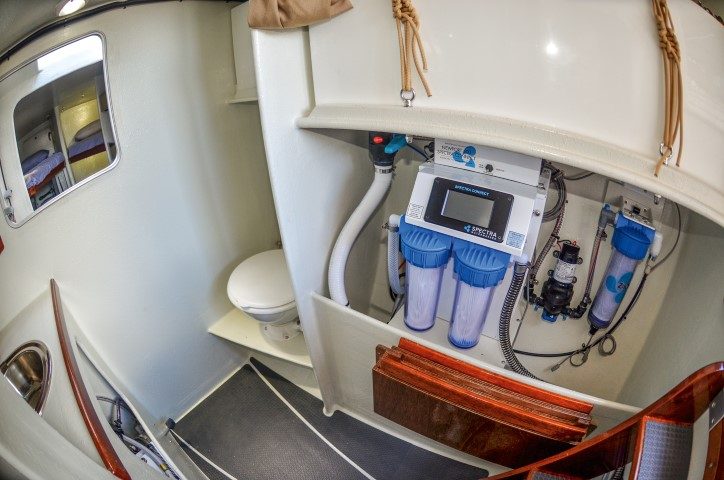
Okeanos’ Waa’Qab will depart for Micronesia in May.

